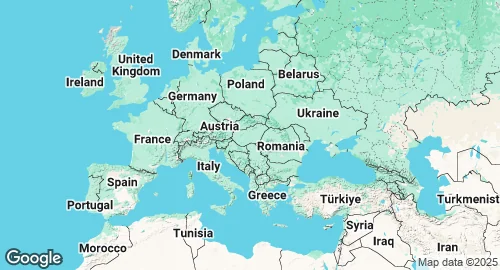Hungary Military Forces 🇭🇺
Military Strength Overview
| 🛩️ Air Force | 69 active aircraft |
| 🪖 Active Troops | 27,800 personnels |
| ⛑️ Reserve Troops | 20,000 personnels |
| 👮♀️ Paramilitary | 12,000 personnels |
| 🎖️ Military ranks | 41 ranks listed |
Defense Statistics & Key Metrics
| Population | 9.6 million (2023) |
| GDP | $212.4 billion (2023) |
| GDP per capita | $22142 (2023) |
| Military Budget | $4.7 billion (2024) |
| Share of GDP in Milex | 2.2% (2024) |
| Share of Govt Expenditures | 4.4% (2024) |
| Military spends per capita | $489 (2024) |
| Inflation Rate | 3.7% (2024) |
| Military Personnel | 46,000 (2020) |
Strategic Overview in 2025
Hungary is in the midst of moving from a long period of neglect to a comprehensive modernization of its armed forces. As a member of NATO and the EU, its strategic posture is deeply embedded within the Western alliance structure. However, its geopolitical position is nuanced by a pragmatic foreign policy that maintains dialogue with Russia, creating a unique dynamic within the region. While a small-to-medium-sized power, Hungary's recent military investments aim to establish it as a credible actor in Central Europe, capable of contributing to collective defense and securing its national interests.
Military Capabilities and Structure
The Hungarian Defence Forces (HDF) are comprised of the Land Forces and the Air Force, operating under a unified command. Following the abolition of conscription in 2004, the military is a fully professional force with a target of growing the active-duty personnel to nearly 38,000.
The backbone of this transformation is the "Zrínyi 2026" modernization program, launched in 2017 to replace obsolete Warsaw Pact-era equipment with modern, NATO-interoperable systems. Key procurements include: * Land Forces: German-made Leopard 2A7+ main battle tanks and PzH 2000 self-propelled howitzers are replacing Soviet-era models. The infantry is being revitalized with the local production of Lynx KF41 infantry fighting vehicles through a joint venture with Germany's Rheinmetall. * Air Force: The fleet is centered on Swedish JAS 39 Gripen multi-role fighters. Airlift capabilities have been enhanced with Airbus A319 and are set to improve further with Brazilian KC-390 transport aircraft. A significant acquisition of Airbus H145M and H225M helicopters has modernized its rotorcraft fleet.
A crucial element of the Zrínyi 2026 program is the revival of the domestic defense industry. Through partnerships with foreign companies like Rheinmetall and Airbus, Hungary is establishing local production and R&D facilities for armored vehicles, ammunition, and helicopter components. This strategy is designed to enhance security of supply, boost the national economy, and create export opportunities.
Strategic Trends and Outlook
Hungary's military strategy is driven by several key factors. The primary motivation is to build a credible territorial defense capability and fulfill its commitment to NATO, aiming to spend at least 2% of GDP on defense. The 2014 Russian annexation of Crimea and the ongoing conflict in Ukraine have sharpened this focus on regional security, mirroring the threat perceptions of its neighbors.
Budapest’s strategic doctrine also emphasizes addressing hybrid threats and controlling illegal migration, which were key catalysts for the modernization program. This is reflected in its independent military mission to Chad, aimed at promoting stability in the Sahel to curb migration flows.
Despite political rhetoric that sometimes puts it at odds with its Western partners, Hungary’s military procurement is almost exclusively from European sources, and it actively participates in NATO and EU missions and exercises. The long-term trend points towards an increasingly capable, modern, and domestically supplied military designed to assert Hungary's sovereignty and contribute to European security frameworks, even as it navigates a complex geopolitical landscape.
Hungarian Military Budget History
Population and Military Personnel Trends
GDP and Inflation Rate Trends
Military Expenditure: SIPRI Milex.
